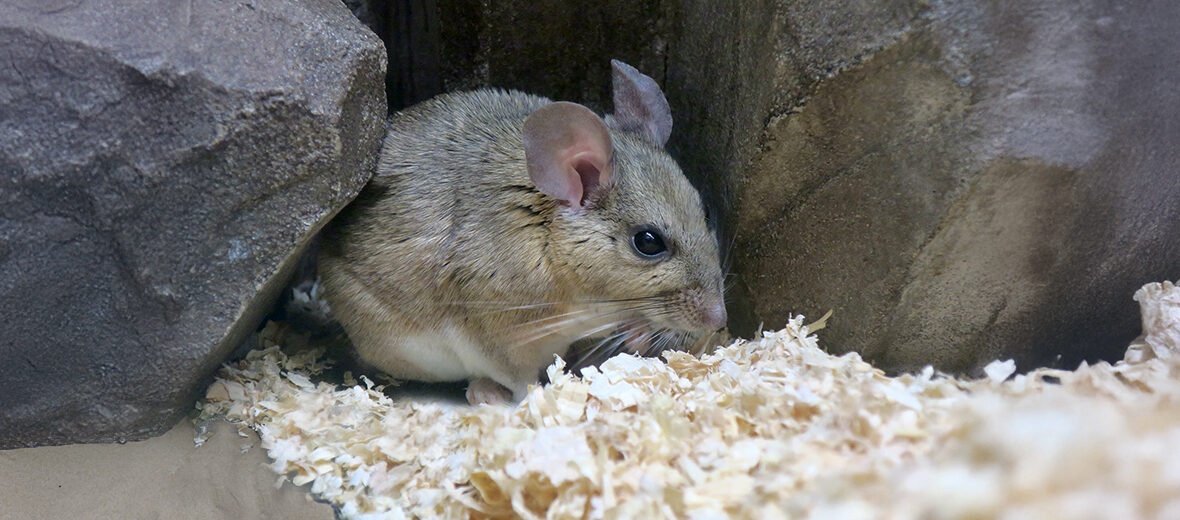
The white-throated woodrat dwells in the Upper and Lower Sonoran life zones, & seen from pinyon-juniper woodland in higher countrysides to desert habitats at lower elevations. They can be found in Mexico, Baja California, California, Arizona, New Mexico, Colorado, and Nevada. Not facing many threats, sans poisoning and trapping, these rodents are listed as Least Concern by the IUCN. They are widespread and abundant with a stable population trend.
First the Stats…
Scientific name: Neotoma albigula
Weight: Up to 7.9 ounces
Length: Up to 7 inches, plus up to a 5+ inch tail
Lifespan: Up to 6 years
Now on to the Facts!
1.) Mesquite flowers, leaves, seeds, bark, cacti flowers, stems, fruits, yucca leaves, beetles, ants, and smaller reptiles are all on the menu.
2.) The foods consumed are largely seasonal and they get the majority of their water from the plants they eat. Standing water is also consumed, if available.
3.) Some of these critters store food in their houses. In fact, out of 30 white-throated woodrat dens found in New Mexico, 77% had stored food. The average weight of stored food was up to 2.2 lbs.
4.) Their natural predators include weasels, bobcats, ringtailed cats, coyotes, American badgers, Mexican spotted owls, great horned owls, bullsnakes, rattlesnakes, dogs, and cats.
5.) These rats are nocturnal (active at night).
But wait, there’s more on the white-throated woodrat!
6.) Like other rats, they are polygynous (1 male mates with multiple females).
7.) Females undergo up to a 38 day gestation (pregnancy) that yields up to 3 pups, multiple times a year.
Did you know…?
Their dens are large and can measure up to 10 feet in diameter and up to 3 feet tall.
8.) Pups are weaned in up to 72 days after birth, but this number changes per region, and they reach sexual maturity in up to 176 days.
9.) While they typically build dens at the base of larger cacti and trees, they prefer to dwell among larger boulders and rocks as it is easier to control the ambient temperature of their dens around boulders and rocks.
10.) A variety of sticks, a collection various debris, parts of cacti, catclaw acacia, mesquite, and yucca are all used to line their dens, with an emphasis on cacti parts.
Now a Short White-Throated Woodrat Video!
Be sure to share & comment below! Also, check out the Critter Science YouTube channel. Videos added regularly!

Want to suggest a critter for me to write about? Let me know here.
Some source material acquired from: Wikipedia & IUCN
Photo credit: RatioTile



